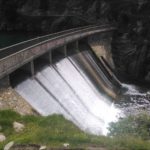 We’ve all heard the joke of the traveller asking a local how to reach a certain town and being told ‘Well now, you can’t get there from here’. We laugh, but when it comes to infrastructure sustainability, our starting point also determines where we can arrive.
We’ve all heard the joke of the traveller asking a local how to reach a certain town and being told ‘Well now, you can’t get there from here’. We laugh, but when it comes to infrastructure sustainability, our starting point also determines where we can arrive.
At a time when I was an advisor to the Minister of Construction, a new dam was proposed. I looked into the proposal. It did not permit extension of the growing area, nor, because of the weather conditions, did it permit extension of the growing time. At best it would provide a fall back for famers in case of drought. However the benefits of that for the few farmers involved came nowhere close to covering the costs involved. No matter which way I looked at it, on economic, social or environmental grounds I could not make it stack up. What really puzzled me was that the major advocate for the dam was no idiot. He was, in fact, a Rhodes Scholar. I said it was a money losing proposition – and he agreed with me!
“Then why on earth do it?” I exploded in frustration.
“Well”, he said, “the money’s going to be spent on something, so it might as well be here!”
Today we tend to start from the assumption that we have to build something which we can see by the fact that governments determine their capital budgets separately from their recurrent budgets. And we often hear anxiety around the notion that ‘we have to keep up the pipeline of construction projects’.
Why? Why is it important to keep UP the capital spend, but keep DOWN the recurrent spend? Is it even possible?
If we want sustainability, maybe we need to look at where we are starting from.

It’s pretty scary if you’re right that we can’t get there from here… under the ‘fit for the future’ program, NSW local government is being encouraged/forced to:
1. increase capex (to meet the renewal ratio, matching infrastructure renewals with depreciation even though other states like SA found this to be meaningless and common sense says if it ain’t broke don’t fix it, that new / upgraded assets to address a critical risk are more important and there’s priorities other than infrastructure) and
2. decrease opex to achieve an operational surplus (no argument there) and realise an ongoing downward trend in opex / capita (but what if the extra opex is a good investment?)
This is really a conundrum. In WA at stste level, it has for many years been debt that finances capex and consolidated revenue that finances recurrent, The principle is that infrastructure will benefit many generations and therefore they can help pay for it. As generations pass, more and more infratsructure is built increasing the debt that will never be paid off, at least not without a halt to the construction cycle somewhere. A chance to catch the collective breath.
Somewher in this there needs to be some rational thought on re-use and longevity. Does it always have to be brand spanking new? Can a re-purposed building satisfy a current need? We know it can in housing (15th Century houses in Paris are still in use, with electricity and wifi and all modern services), just as it can in the monumental (the Hagia Sophia in Istanbul has been a Catholic Church, a Mosque, and is now a museum). The question is how can a country police station be recycled? That’s where we start to wonder if we can get there from here.
I agree with Penny. If you think about the likely impact of disruptive technology amplified by demographic and climate change, planning infrastructure by looking in the rear view mirror is not a smart way to get ready for the future.
If your asset is about to become obsolete it is smart to spend more on operating and maintenance cost to extend the life before building a new asset that is not fit for the future.